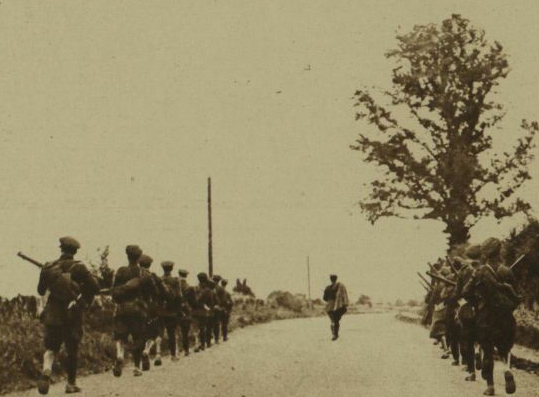Hostilities spread to provinces as both sides commit to continuation of conflict
Limerick, 22 July 1922 – Hostilities which began in Dublin with the bombardment of the occupied Four Courts on 28 June have now spread to other parts of the country.
Fighting between national troops and anti-treaty forces has been reported in Wexford, Waterford, Tipperary, Limerick, Galway, Mayo, Sligo and Donegal.
No end to the fighting is in sight with neither party showing any real interest in reaching a peaceful resolution at this point.
A statement by the provisional government in recent days has indicated that peace at any price is not on the cards: ‘A peace built upon a compromise with forces that have behaved as the Irregulars have behaved would be a peace too costly for the Irish nation.’
The republican forces are equally committed to a continuation of hostilities. A statement issued to all their volunteers declared:
‘The fight is not over… the blood and sacrifices of this fight would not be shed and endured in vain.’
‘To reach the goal of freedom it is necessary that the fight be carried on in many different forms... Let every soldier of the Irish Republican Army prepare for the great days ahead, stand together, encourage one another, be alert always, and be faithful to your solemn pledge to rid the nation of her enemies.’
The enemies that the republicans now face are their former comrades who make up the National Army. Since a call to arms has been issued, there has not been a single day when less than 500 men have enlisted and on some days, the number has topped 1,000.
Pathé newsreel footage of national troops during the Civil War 1922
There are two classes of new recruit. The first were the Volunteer reserve, who had nominally been on the roll of the IRA but who had little or no involvement in past conflict. The second class of recruit are Irishmen who were not associated with either side in the war of independence, although some of them bring experience from the recent European war.
Both officers and rank and file members of the National Army have been receiving expert instruction in military engineering, tactics, training and musketry, ordnance supplies etc.
Reports from various areas suggest that the National Army has re-taken territory from the Irregulars. Castlerea, which had been held by a force numbering 300, was captured without the loss of a single national soldier and with the help of an 18 pounder gun which was used to shell the heavily-fortified headquarters of the anti-treaty troops at Clonalis Castle. Following a brief bombardemnt the Irregulars abaonded the building. A number of them escaped into the open countryside – where more rifle fire was exchanged – but many were forced to surrender.
Limerick City is now also in the hands of the National Army after anti-treaty forces were ousted from the strongholds they had occupied. Fighting got so intense that the Lord Mayor issued a proclamation urging women and old men to leave certain areas.
While some of the anti-treaty troops have been taken as prisoners – 26 were captured in the Strand Barracks alone – others opted to evacuate the city, retreating in south-westerly direction. Before they left, however, many of the buildings that had been occupied were set on fire.
Press reports from sources sympathetic to the provisional government suggest that the ‘relief’ of Limerick City and the arrival of national troops was enthusiastically received, with hundreds of city inhabitants braving ongoing sniper fire to ‘thunderously cheer’ the soldiers of the regular army.
[Editor's note: This is an article from Century Ireland, a fortnightly online newspaper, written from the perspective of a journalist 100 years ago, based on news reports of the time.]





















